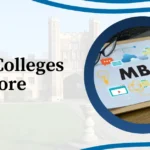Are you looking for a Brazil student visa? If yes then you are at the right place. If you are an international student planning to study in Brazil, you will...
Are you looking for a Luxembourg student visa? If yes then please keep reading till the end. Luxembourg is a tiny European country known for its finance hub...
Are you looking for a Belgium student visa? If yes then you are at the right place. If you are from outside the EU and want to study in Belgium, you will need...
Looking for South Africa Student Visa? then you have landed on right article. South Africa is one of the most well-known travel destinations because of its...
Are you planning to get a student visa in Estonia? If yes, then you are at the right place. Of the three Baltic states, Estonia is the northernmost, bordering...
Are you looking for an Indonesia student visa? If yes then you are at the right place. If you want to study in Indonesia, you will need an Indonesia Student...
Are you looking for Spain Student Visa, then you are on the right place. Spain is a preferred study destination among many international students. Along with...
Looking for Student Visa for Hungary? then you come to the right article. With 67 higher education institutes, Hungary provides all students with a top-notch...
Are you looking for a Portugal student visa? If yes then please keep reading. Portugal is in Southern Europe and famous for its beaches, food, and beautiful...
Are you looking for a Latvia student visa? If yes then please keep reading. If you are from EU countries or Switzerland, you do not need a study permit for...


























